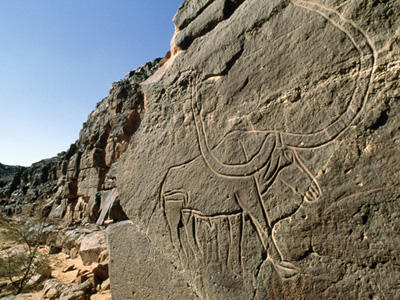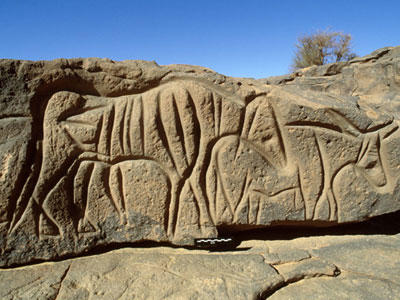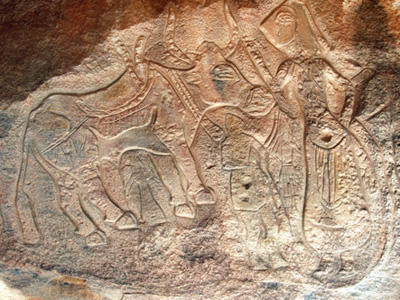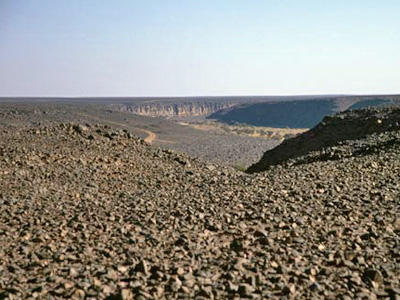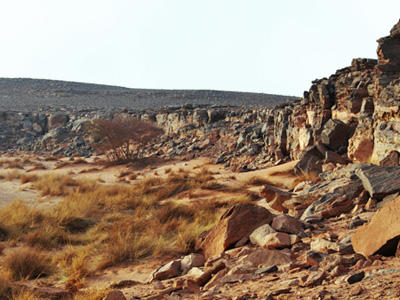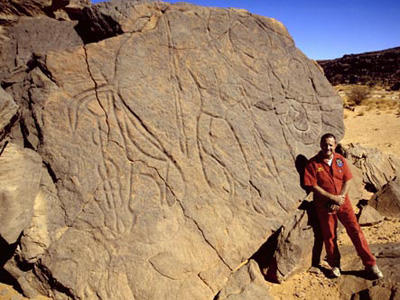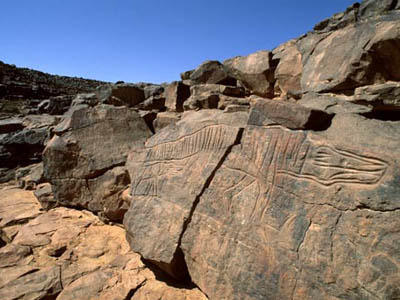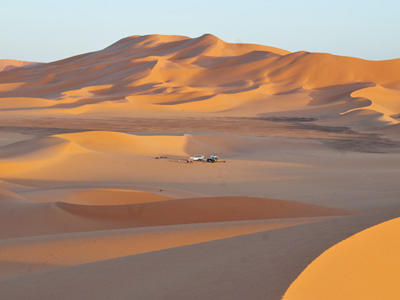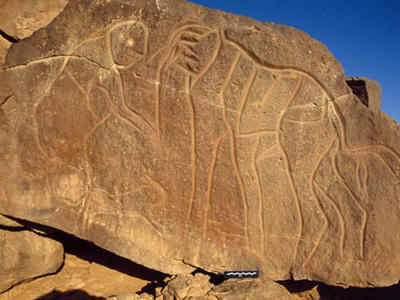Wadi Mathendous Rock Art
Located in the Messak Plateau in southwest Libya near the borders of Algieria and Niger, Wadi Mathendous contains some of the world’s oldest rock art. Incised onto the rock face of the cliffs of the dried riverbed is a veritable prehistoric menagerie, including life-size elephants, giraffes, and crocodiles. Some figures are displayed alone, while others are in complicated compositions in battle with other animals or with humans. One of the more well-known scenes from the Wadi Mathendous petroglyphs is the Fighting Cats. In recent times Wadi Mathendous became a popular tourist destination, however, without proper site management, visitors climbed on rocks to touch the carvings. Substantial damage was also caused by underground vibrations from nearby oil drillings. This sheared several large fragments of stone off the rock face. While the Libyan government recognized the important of the art, little was done to control tourists, mitigate mining activities, or to ensure the petroglyphs’ preservation.
2008 World Monuments Watch
In 2007, with support from the Robert W. Wilson Challenge to Conserve Our Heritage, WMF assisted Trust for African Rock Art in documentation, surveys, and developing programs for local residents to advance their knowledge of the site and serve as tour guides. Trust for African Rock Art developed a conservation management plan for Wadi Mathendous in addition to completing stabilization of damaged areas of the site. In 2008, 1,600 images were compiled in a database to enable scholars access to the art and to allow materials on the site to be incorporated into teaching and outreach tools. Petroleum companies were engaged to share information on the issues of Libya’s rock art heritage and how to mitigate negative side-effects of prospecting and extraction operations near Wadi Mathendous.
The rock art at Wadi Mathendous represents some of the finest examples of prehistoric rock art to be found in North Africa. The images found at the site include life-sized images of elephants, rhinoceros, giraffes, lions, humans, and half-human creatures. These carvings are important for educational and research value as well their potential for well-managed heritage tourism.

